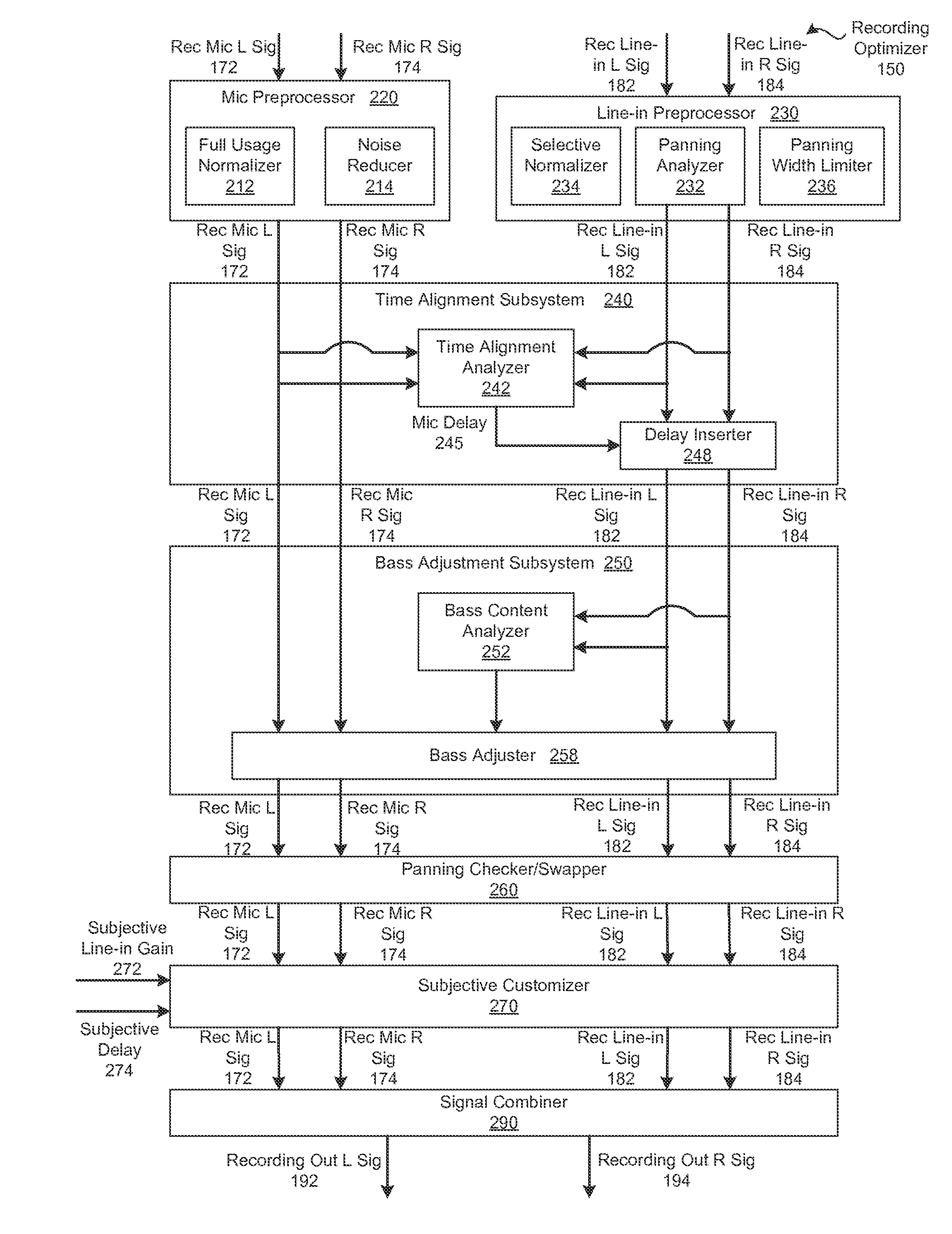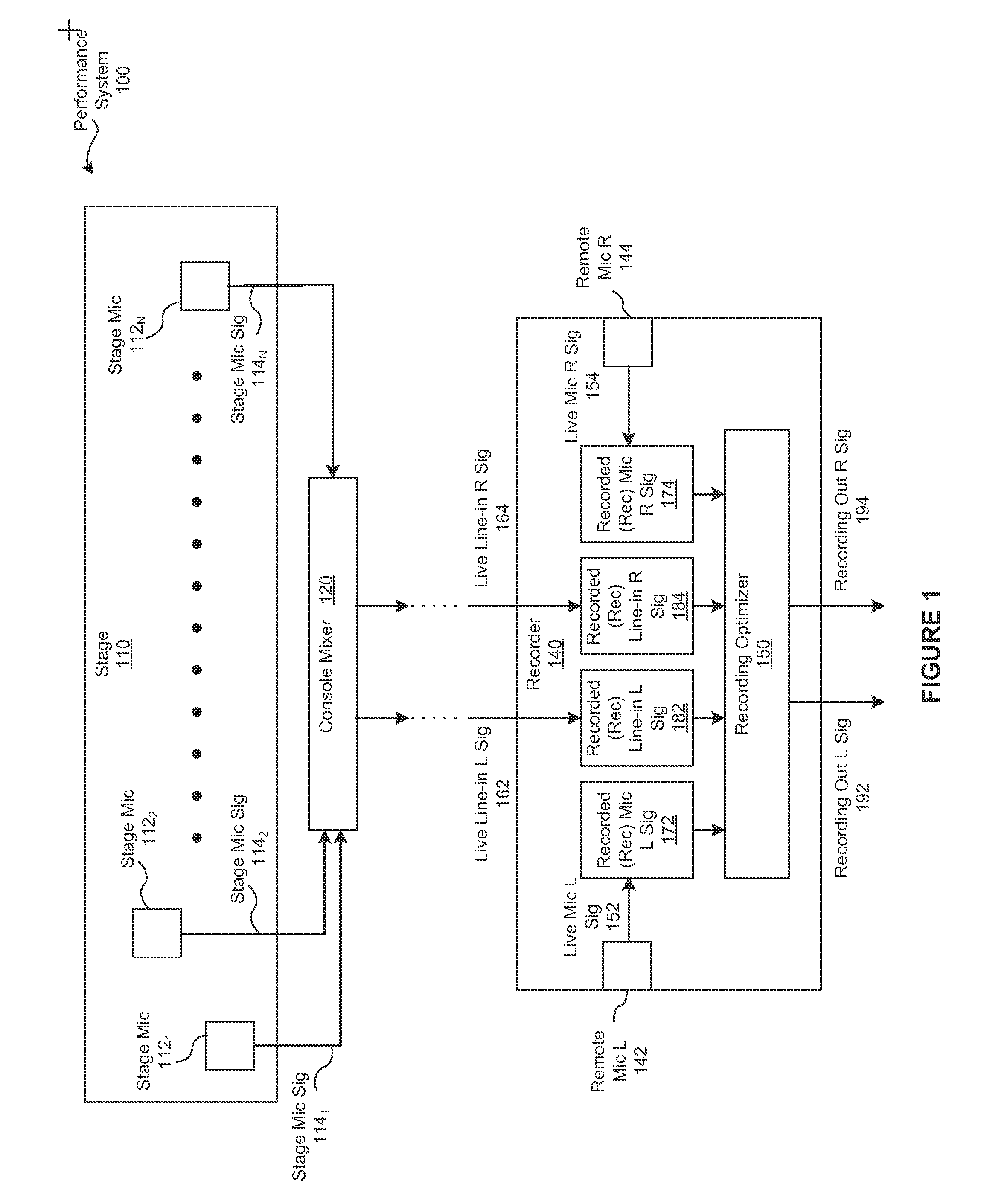Techniques for optimizing the fidelity of a remote recording
a technology of remote recording and fidelity, applied in the field of acoustics technology, can solve the problems of reducing the fidelity of the remote recording, affecting the quality of the recorded signal, and the underlying content of the two sets of signals, so as to reduce ambient noise, accurately reflect the performance, and improve the fidelity
- Summary
- Abstract
- Description
- Claims
- Application Information
AI Technical Summary
Benefits of technology
Problems solved by technology
Method used
Image
Examples
Embodiment Construction
[0002]The various embodiments relate generally to acoustics technology and, more specifically, to techniques for optimizing the fidelity of a remote recording.
[0003]Description of the Related Art
[0004]Oftentimes, remote recording devices include various microphones used to record, from a distance, acoustic audio signals associated with a performance. For example, a handheld recorder may include one or more microphones and may be configured to generate a stereo recording of the sounds received via the microphones during a performance. Typically, the stereo recordings captured by such remote recording devices accurately reflect the performances as perceived at the locations of the remote recording devices. However, since the microphones may pick up ambient noises such as crowd noise, wind noise, building noise, traffic noise, room reverberation, etc., the quality of the recorded signals may be relatively low.
[0005]In an attempt to improve the quality of the recorded signals captured b...
PUM
 Login to View More
Login to View More Abstract
Description
Claims
Application Information
 Login to View More
Login to View More - R&D
- Intellectual Property
- Life Sciences
- Materials
- Tech Scout
- Unparalleled Data Quality
- Higher Quality Content
- 60% Fewer Hallucinations
Browse by: Latest US Patents, China's latest patents, Technical Efficacy Thesaurus, Application Domain, Technology Topic, Popular Technical Reports.
© 2025 PatSnap. All rights reserved.Legal|Privacy policy|Modern Slavery Act Transparency Statement|Sitemap|About US| Contact US: help@patsnap.com



